For many children in the United States who grew up in the 1980s, 1990s and early 2000s; the video game The Oregon Trail will likely bring back memories. For those of you who are not familiar with the game, in The Oregon Trail you take control of a family moving west in the mid 1850’s. In the video game you would buy supplies, face various challenges, hunt, cross rivers and just hope to survive until you reached Oregon. I fondly remember The Oregon Trail from my childhood even though I don’t know if I was ever able to make it to Oregon safely. With how nostalgic people are for the video game, it isn’t a big surprise that The Oregon Trail Card Game was made. While the game relies heavily on luck and can be brutally difficult, there is still something charming about The Oregon Trail Card Game that makes it an enjoyable game.
How to Play The Oregon Trail Card Game
Setup
Write everyone’s name on the wagon party roster card. Place the start card (Independence, MO) on one end of the table and the finish card (Willamette Valley, OR) on the other end of the table. Divide the rest of the cards based on their backs into three decks and shuffle each deck separately. Deal five trail cards to each player. Deal supply cards to each player based on the number of players:
- 2-4 players: 5 supply cards
- 5 players: 4 supply cards
- 6 players: 3 supply cards
Players can look at their own cards but can’t show them to the other players. The supply cards that weren’t dealt out to the players are separated into piles of like items on the table. The rest of the cards not dealt to players form draw piles. The player born closest to Willamette Valley, OR gets to be the first player.
Playing the Game
On a player’s turn they can perform one of three actions:
- Play a trail card adding it to the current path.
- Play a supply card.
- Draw a trail card (if you can’t play a trail card and don’t want to play a supply card).
Trail Cards
If a player plays a trail card, it must be played in a way that connects to the last played trail card. The cards can be turned either way to connect to the previous path. If a player has a trail card that they can play, they must play it unless they play a supply card.
If a trail card has the text “Press Spacebar to Continue” the player who played the card has to draw the top calamity card. Whatever is printed on the card applies to the player who played the card.
When a player plays a river card, the player who played it has to follow the directions on the card to try and successfully cross the river. If they roll the number required to cross the river nothing happens and play passes to the next player as in a normal turn. If the player fails to successfully cross the river, they will suffer the consequence for the number they rolled. If the river was not successfully crossed, the next player must use their turn to try and cross the river by rolling the die. This continues until one player successfully crosses the river.
A player can play a fort or town to connect to any other trail card. When the town or fort is played the player gets to take the action printed on the card.
If the wagon breaks down or the oxen die, the players are unable to play any cards on their turn until the situation is resolved.
Every time five trail cards are connected, the trail is stacked. The players take the first card in the group played and place it on top of all of the other cards.
Supply Cards
Instead of playing a trail card the player has the option of playing a supply card. Usually a player can only play one supply card on their turn but if there are only two players remaining they can play two supply cards on their turn. The main use for a supply card is to play it to get rid of a calamity card in front of one of the players.
In some situations a player might also lose one of their supply cards. If they still have a supply card(s) they can choose which card they want to return to the supply shop. If a player has no supply cards remaining and are losing a card, they must randomly choose a supply card from one of the other players to discard.
Finally at any time a player can trade in two of their supply cards in exchange for one supply card of their choice. Two players can both trade in one card but the players then have to decide who will get to take the new card.
Calamity Cards
When a player draws a calamity card, they read the card’s text aloud. Some calamity cards will immediately kill a player.
Most calamity cards give the players an opportunity to fix the situation before they die. These calamity cards will indicate how many rounds the players have to remedy the calamity. A round begins with the player to the left of a player who drew the calamity card. Every player including the player who drew the card has an opportunity to play a supply card to fix the calamity before a round is considered over. If the players play the necessary supply card(s) in time, the calamity card is discarded. If the supply cards aren’t played in time, the player(s) who are affected by the calamity suffer the consequences of the card.
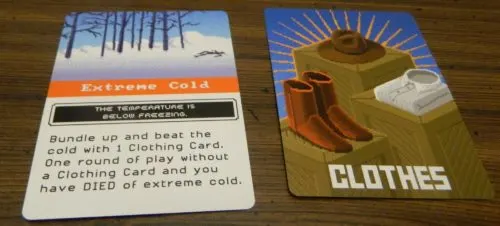
To cure this calamity one player has to play one clothes card. Once the clothes card has been played the calamity is cured.
Dying
When a player dies due to a trail or calamity card, they can give two of their supply cards to the rest of the group. The rest of their supply cards are returned to the supply shop. All of the trail cards in a dead player’s hand are put on the bottom of the trail pile. The player’s name is removed from the wagon party roster and their name is added to a tombstone on the back of the card.
End of Game
The Oregon Trail Card Game can end in two ways.
If all of the players die, every loses.
The players will reach Willamette Valley, OR if they are able to play ten sets of five cards (50 trail cards total). If at least one player is still alive and reaches Willamette Valley, all of the players win the game.
My Thoughts on The Oregon Trail Card Game
When I first saw The Oregon Trail Card Game I didn’t know exactly what I was going to get. When you look at the box it kind of looks like a designer game. At the same time though it was made by Pressman Toy Corporation which really isn’t known for their designer board games. After playing the game it kind of feels like a blend of a mass market game and a designer game. It is a pretty light game but it has some interesting ideas that you don’t really see in mass market board games.
The first thing that stuck out to me was that The Oregon Trail Card Game is a pretty easy game to learn and play. I would guess that it would take 5-10 minutes to explain the game to new players. Basically you just play cards. The main thing you have to learn is what the different cards do. For people who have never played a cooperative game before, it may take a little longer explaining how cooperative games work. With how simple it is, The Oregon Trail Card Game would work pretty well as an introductory cooperative game.
The problem with The Oregon Trail Card Game being easy to play is the fact that it doesn’t present the players with a lot of options for strategy. There are a couple strategic decisions to make in the game but a lot of them don’t play a large role in the outcome of the game. The outcome of the game is somewhat predetermined when the cards are shuffled. If a lot of the worst cards show up early in the game you will have a hard time winning. While you have a choice on what card to play at any time, usually your choice is pretty obvious or there is only one option.
I think the biggest area for strategy in The Oregon Trail Card Game is determining when and if a supply card should be used to help another player. At times it might actually be beneficial for the group to just let one of the players die instead of wasting cards trying to save them. Since only one person has to make it to the finish for everyone to win, you might eventually have to let someone go. This might be a little boring for the player who dies since they no longer can impact the game but it might be the best choice for the team.
In addition to strategically letting one of the players die, there are some risk/reward decisions to make in the game. A good way to save supply cards is to avoid using them to immediately save another player. Some of the calamity cards fix themselves if you give them time. You are risking drawing another of the card killing the player but you could possibly save a supply card that you could really use later in the journey. Choosing when to take risks is important in the game. Figuring out the best times to draw calamity cards or cross rivers can play a role in whether you succeed or fail.
Being a fan of the video game when I was a child I was interested in seeing how the theme would be applied to the card game. For the most part I think the game does a pretty solid job simulating the video game. The game has quite a few references to the video game (you can die from dysentery pretty easily for example) and quite a few of the mechanics from the video game are implemented in the card game. The only real problem with the theme is that it kind of falters due to some of the mechanics. In particular I like that when a player dies they only keep two of their items and have to discard the rest. I don’t think the people on the Oregon Trail would have thrown away necessary supplies because someone died. These mechanics are necessary for the gameplay purposes but they kind of take you out of the theme.
Probably the biggest potential problem with The Oregon Trail Card Game is the fact that the game can be absolutely brutal. The game will be constantly challenging your group’s survival. A lot of the trail cards either force you to draw a calamity card or to roll a die in order to successfully cross a river. There are several different ways that you can instantly die. The game seems to actively work towards destroying the players. I think most games of The Oregon Trail Card Game will end with the players failing to reach Oregon. When I first started playing The Oregon Trail Card Game I was certain that our group was going to die. We got several calamities and ended up losing quite a few of our supply cards. After around five to ten trail cards I thought we wouldn’t even make it half of the way to Oregon.
Then our fortunes seemed to change drastically as luck appeared to be on our side. When we had to draw calamity cards we seemed to draw most of the weakest cards which included cards where we just lost turns. We ended up taking quite a few risks which allowed us keep supply cards that we needed for later in the journey. The biggest contributor to our success though was the fact that one player in particular rolled extremely well. This player pretty much rolled the perfect number every time they rolled the die. This helped us avoid a lot of trouble and was possibly the greatest contributor to us winning the game.
While I think most games of The Oregon Trail Card Game will end in death, I don’t rule out the possibility of winning since our group actually won our first game. We actually completed our journey without a single player dying. I don’t see groups regularly winning though since we needed a lot of luck to win the game. If you don’t have nearly the same amount of luck I think you will likely lose. If the fact that you will likely lose most games bothers you, The Oregon Tail Card Game is not going to be for you.
Other than being lucky, I think player count plays a big role in determining whether a group will be successful. The Oregon Trail Card Game is a game where it pays to have more players. I honestly see it being almost impossible to win the game if you only have two or three players. Even with four players we needed a lot of luck to win. If you want a better chance of winning I would recommend playing with five or six players. The main reason more players is better is that it allows for more bad decisions and bad luck. With only two or three players you could end up all drawing insta-death cards and the game will end. With more players it is easier to minimize bad luck. You can also spread out the supply cards more which makes death not as damaging as it is in larger groups.
For the most part I like the game’s components. Being a fan of pixel art I really liked the game’s artwork. The artwork is really reminiscent of the original video game. I will say though that I was not a big fan of the artwork on the trail cards since they basically just have a green line on them with some of the cards having some text. If you don’t like pixel artwork though you probably won’t like the game’s artwork. Other than the artwork the game’s components are pretty nice. I always like games that use erasable markers and I like that the game included the gravestones where you could make witty remarks when players die in the game.
Should You Buy The Oregon Trail Card Game?
I will say that I have conflicted feelings about The Oregon Trail Card Game. The game does a pretty good job representing the video game. It is easy to learn and play. It works well as an introductory cooperative game for people who have never played one before. The problem with the game is the lack of decisions to make along with the high reliance on luck. The game kind of feels predetermined as your actions aren’t going to play a big role in the outcome of the game. Add in the fact that the game can be brutally difficult to win and it is frustrating that you don’t have a lot of control in the game.
If you don’t really have any fond memories for the video game and don’t like that the game relies so much on luck, The Oregon Trail Card Game is not going to be for you. If game’s premise interests you or you are looking for an easy cooperative game, you could do a lot worse than The Oregon Trail Card Game. If you can find the game for cheap I think it is worth picking up.
If you would like to purchase The Oregon Trail Card Game you can find it online: Amazon, eBay

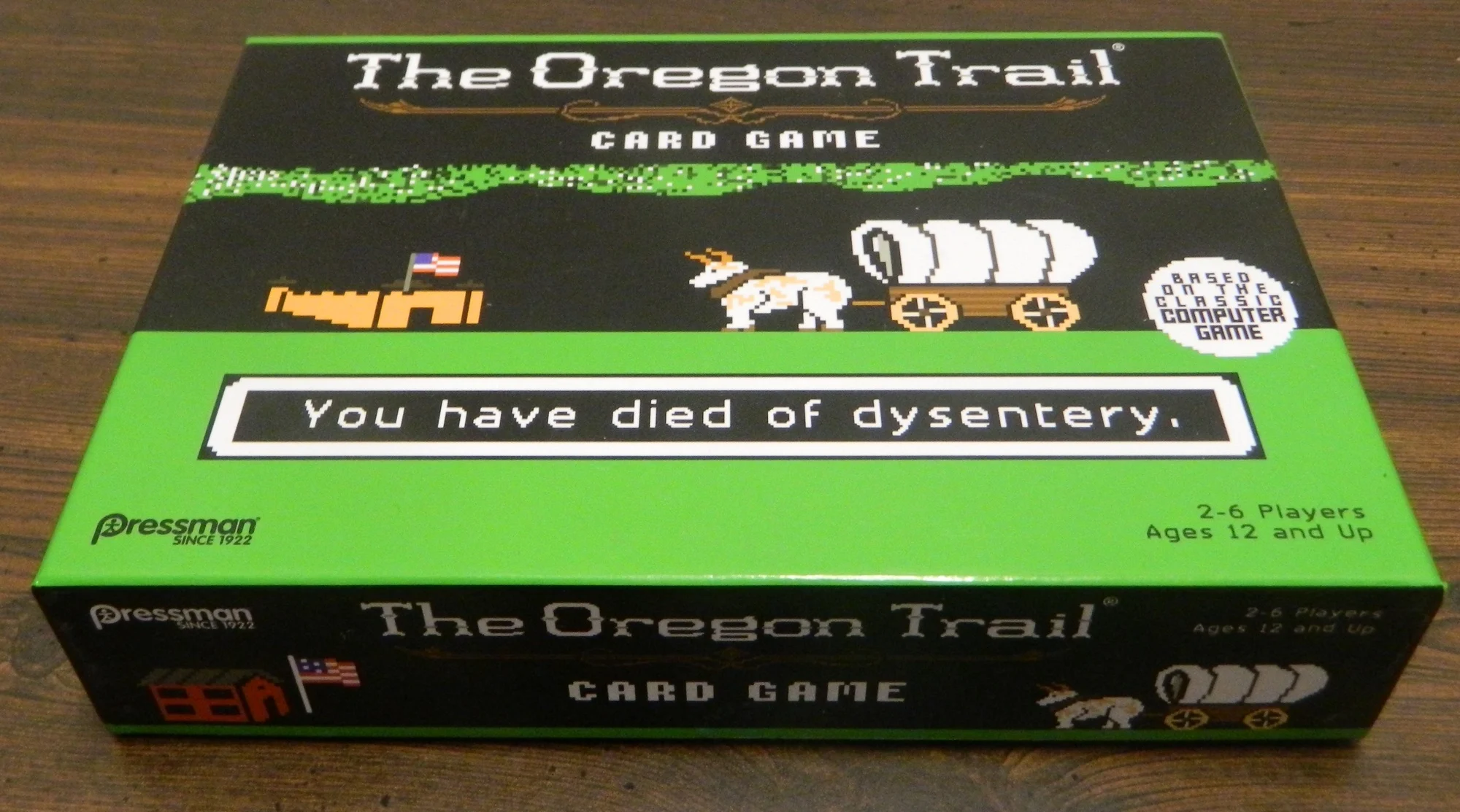
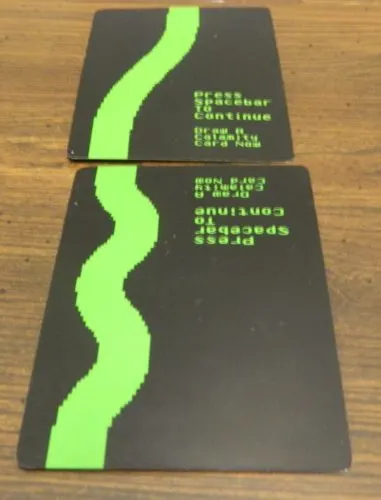
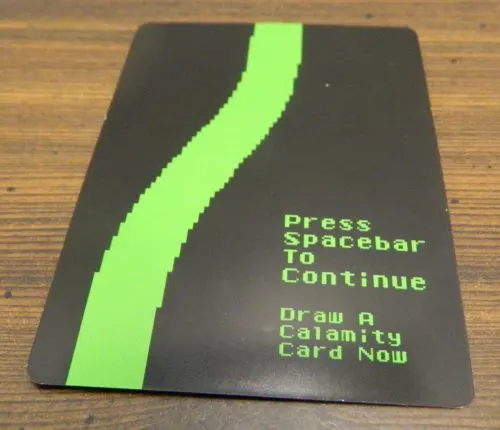
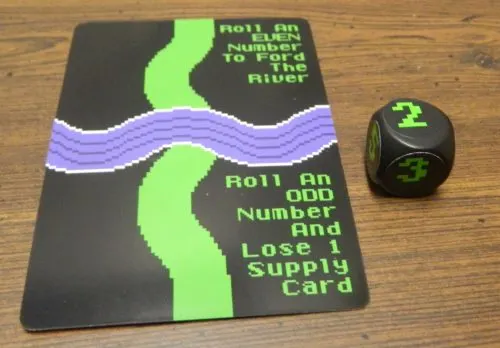
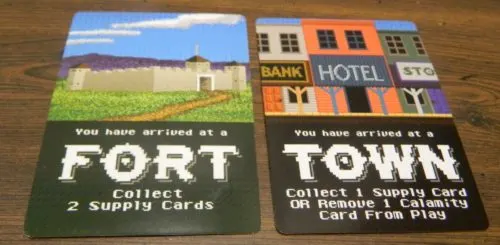
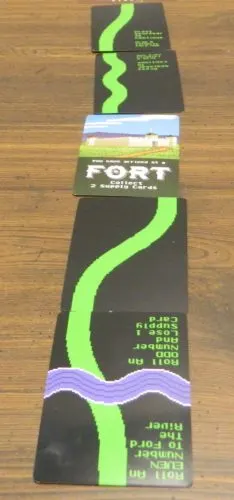
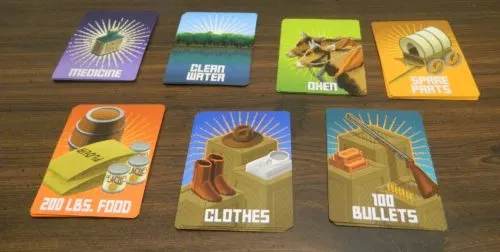
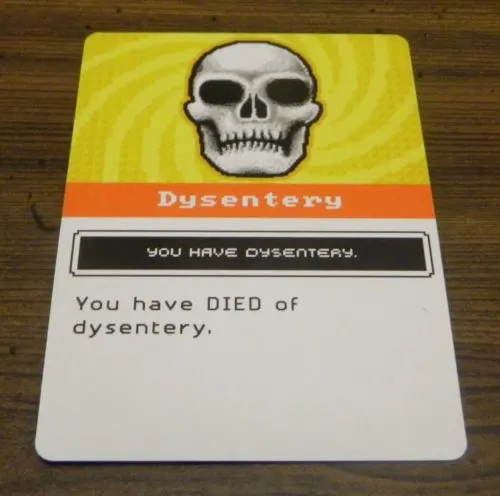
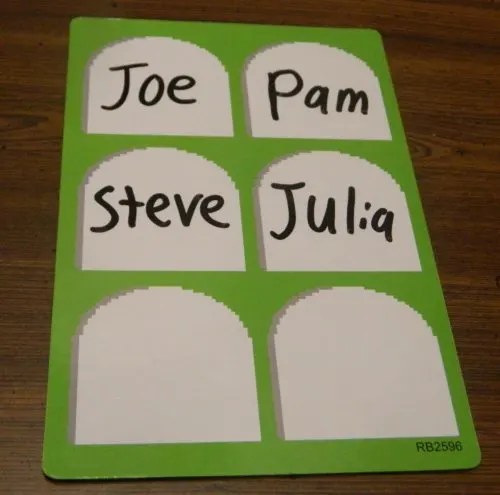
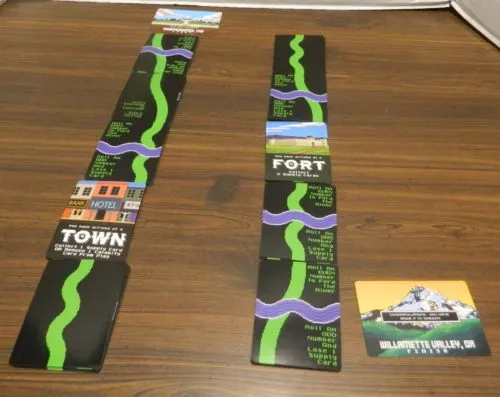
MATT
Sunday 7th of February 2021
I enjoyed this game, but the instructions included left a lot to be desired. Here are the two main questions I have, both about fording a river: If someone rolls an odd and is supposed to discard a supply card and the entire party has NO supply cards, wouldn't that mean that, until you get another supply card a town/fort, there are NO consequences for rolling odds at a river (assuming it isn't a roll 1 and die type ford). Second, if I rolled an odd and discarded a supply card, does that happen to EVERY subsequent person to roll an odd? In our first game we rolled odd four times in a row and lost 4 supply cards. Is that the correct way to play?
Eric Mortensen
Monday 8th of February 2021
Hello.
The game has apparently altered the rules somewhat for newer printings of the game but I don't think it really impacts your questions. You are supposed to keep rolling until someone rolls a number to be able to cross the river. If you roll a three or five and can't pay the supply card; you don't have to pay it, but you can't cross the river until someone rolls the correct number. I agree that this seems to lead to no consequences for rolling an odd number unless you are facing one of the cards where you can die by rolling a one as you will expose your group to this possibility for more rolls.
As for your second question, I believe you would have to discard one supply card for each player that rolled a three or five.
If you wanted to see the updated rules from newer versions of the game, you can check out the game's official website.
I am sorry that I couldn't be of more help.
I hoped this helped.
Mikah Morison
Friday 6th of December 2019
Do you have to draw a trail card every turn?
Eric Mortensen
Saturday 7th of December 2019
You will only draw trail cards if you don't have a trail card that you can currently play or you don't want to play a supply card.